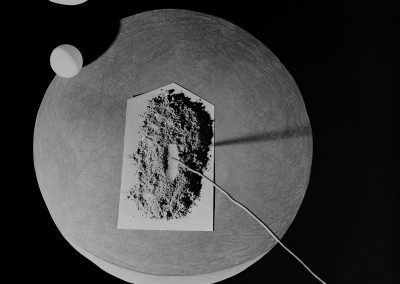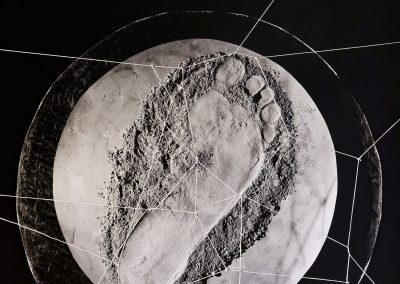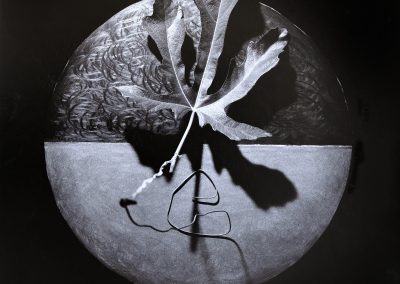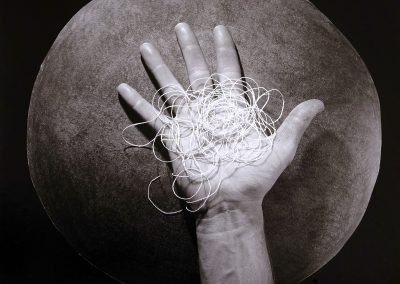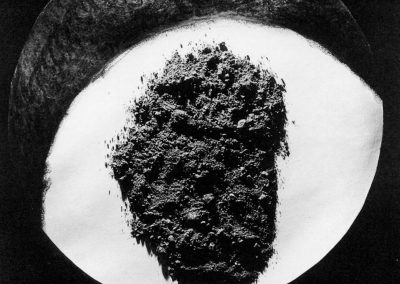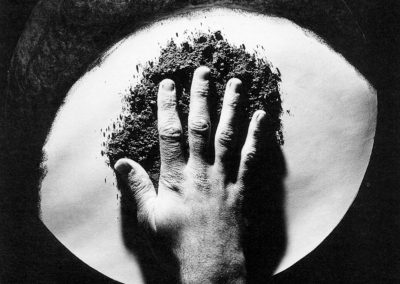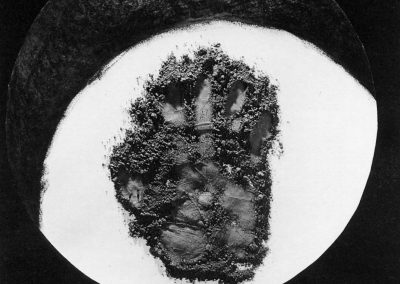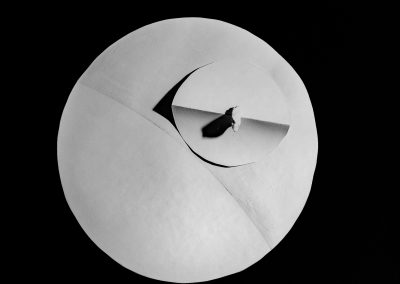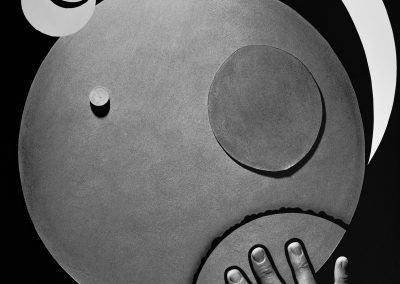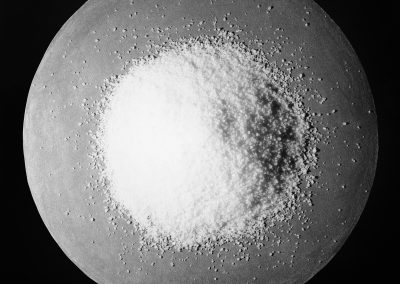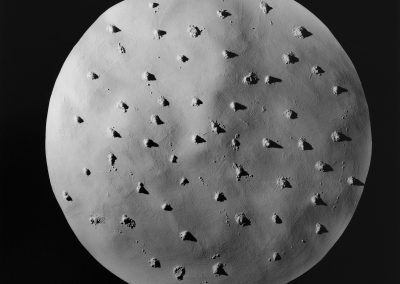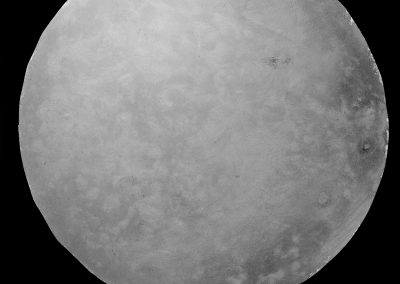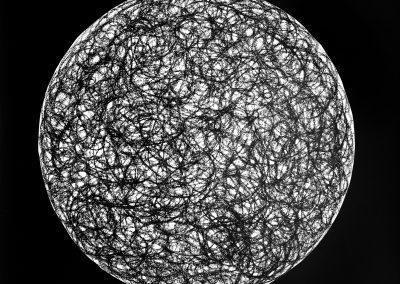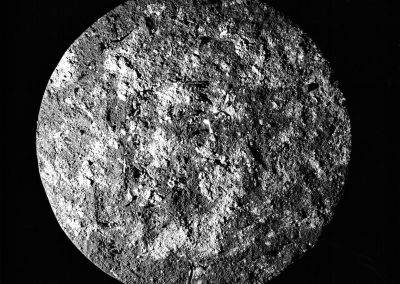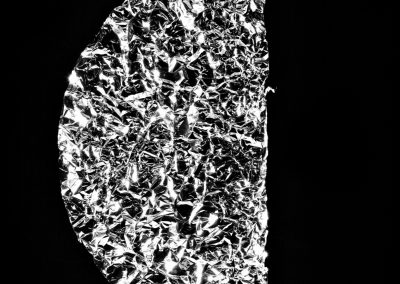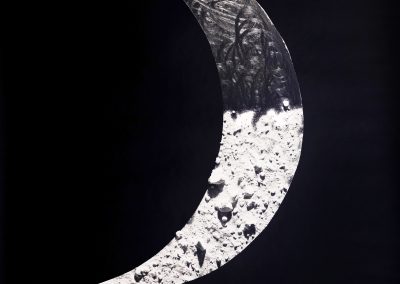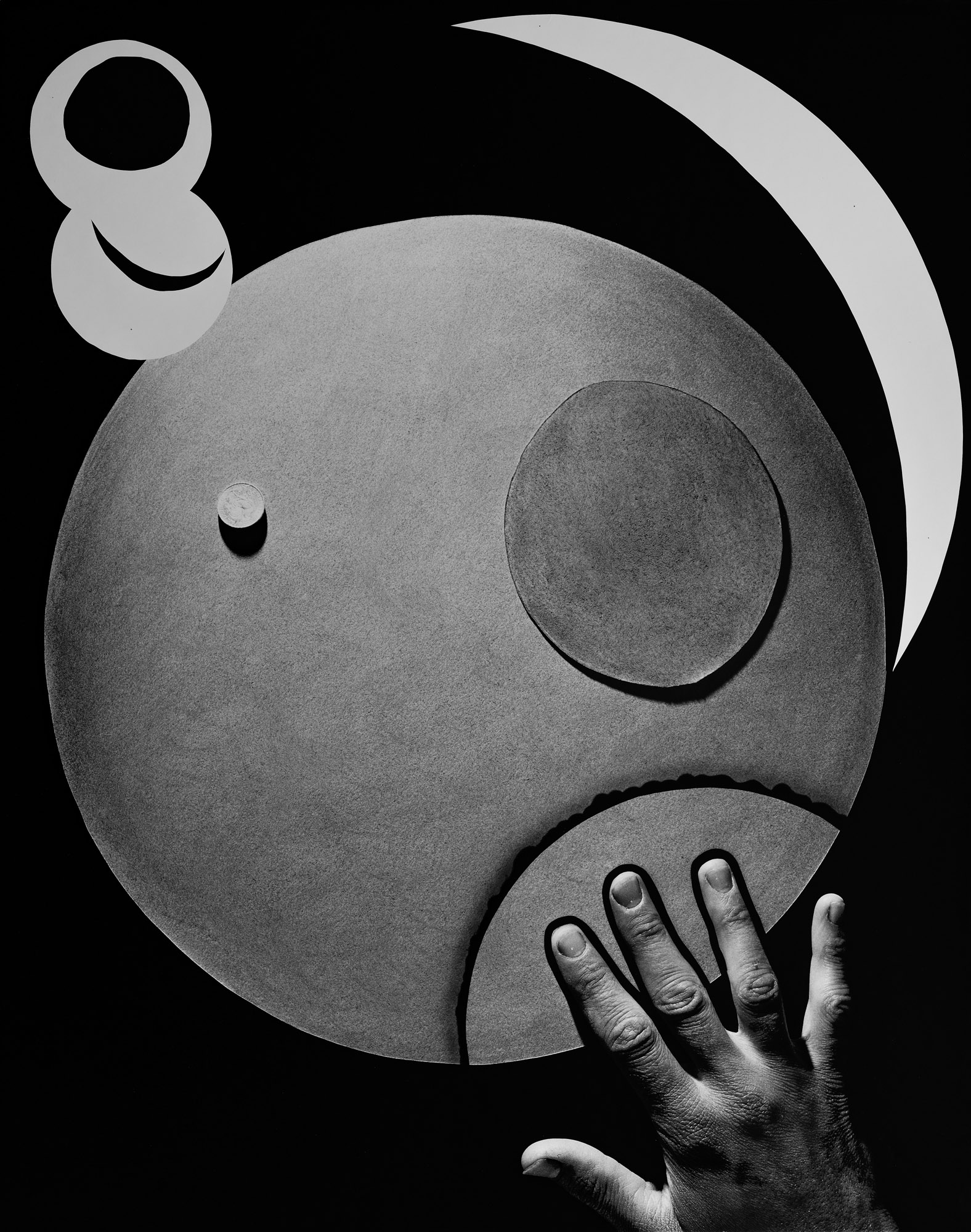
LVNA PROXIMA
The series was accomplished between 1986 and 1987 and were printed to 75cm x 92cm for the Premiers Lunes and 94cm x 117cm for the Nouvelles Lunes.
Established in Provence close to ten years after a long stay in California, Henry Lewis is among the important young photographers working in France at present. The self-portraits series inspired by Body Art of the 1960’s that he exhibited in various European galleries were very well noticed and unanimously appreciated. From Performance, Lewis re-appropriated an already painterly form. His body became a ground for experimentation, brut materials, and a canvas for painting.
The body has today disappeared unless the faces of the Moons are reminiscent of his own face. The creative work of the Moons is articulated in the same way as the work accomplished for his Body work. Same processes of mis en scène of the image, same game of detournement of all documentary elements contained in the image, same desire to not bring forward a discourse. From the physical body to the celestial body, the preoccupations are common and the decoding of these images passes by the use of similar vocabulary.
The phenomenon of mis en scène imagery remains an essential condition for the elaboration of his work. But the moon photographs are this time submerged in a universe strictly poetic within which subsist however the same extroverted dimension. One of Lewis’s moons surprisingly brings to mind the Land Art work of Robert Smithson, Spiral Jetty, achieved at The Great Salt Lake in Utah in 1970 where we find the same interpretation of the spiral, the component of an autonomous plastic space of unreal dimensions. But there where Robert Smithson makes a space meet with a physical experience, Henry Lewis choses to work in an extremely intimate manner by considerably reducing the scale of his composition and reverses Smithson’s proposition by unrolling the spiral towards the exterior.
Photography for Henry Lewis, in contrary to Smithson or Land artists, does not exist as a necessity for the recording of an ephemeral work, it is a technic for the creation of images in which the object photographed exists only as a preparative stage of the completed piece. From there, Lewis at the time of the printing makes direct interventions on the image by printing additional forms. These forms are in some way markers, traces that enrich the classical equation photography-instrument-image.
Lewis’s work like that of the young generation of French photographers or those living in France indicates a shift of the notion of contemporary photography.
In looking at the history of photography in order to draw lessons, this young generation of photographers has understood the necessity to situate the creation photographic within the wider and more stimulating sphere of contemporary art. This claim passes by the rupture of their isolation, by the creation of comparative scales with other forms of artistic expressions, by the understanding that their images are not ones of mechanical reproduction, reproduced identically to infinity, by the certitude that the photographic piece is a work of art.
Bernard Millet
Translation of his article in MARS (France) No 19, 1987

